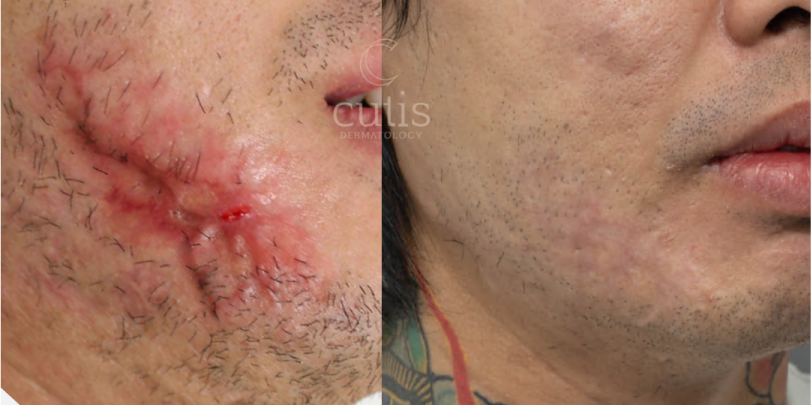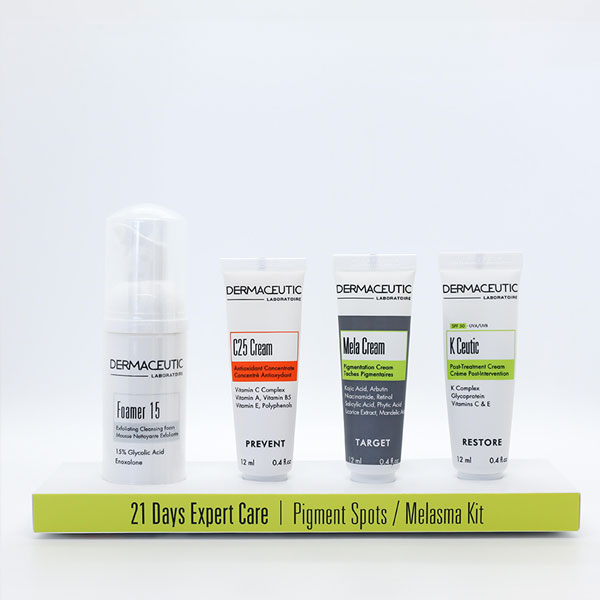Cutis Dermatology is known nationally & internationally for our excellence in scar revision. We use the very latest technology & scar revision techniques to improve scarring from surgery, flaps, grafts, burns & trauma.
Surgical Scar Removal at a glance
我们的结果不言自明

Before
After

Treatment: NdYag hair removal, CO2 fractional, CS injections, Silicone gel
向我们询问更多关于该疗法的信息

Before
After

Strataderma gel can reduce the appearance of scars. Best initiated early.
向我们询问更多关于该疗法的信息

Before
After
常见问题
Who are our scar specialists?
Our Internationally recognised scar revision team comprises of Dr Sarath Bodaparti, Dr Heba Jibreal & Dr Davin Lim together with a team of nurses. Together they manage all forms of scarring, including complex burns, traumatic, & surgical scars.
They provide scar revision procedures privately & at the Royal Brisbane Hospital, & Queensland Children’s hospitals. They also present & publish internationally on scar revision techniques.
How can we help?
Our team performs over 30 scar revision procedures daily. We can-
- Reduce surgical scar lines
- Treat red or brown scars
- Treat raised scars
- Treat depressed scars
- Manage white or hypopigmented scars
- Treat flap & graft scars
- Manage burn scars
When is the best time to treat scars?
Scar revision should be started as early as possible. The most recent scientific studies have shown that early intervention with silicone, anti-inflammatories & vascular lasers can prevent & reverse skin scars.
How do we treat raised scars?
Raised surgical scars are treated with-
- CS anti-inflammatory creams or injections
- Silicone tape
- Vascular lasers
- Fractional lasers with steroid occlusion
Combination treatments are best, depending on the clinical findings.
How do we improve the surgical scar line?
If the scar line is-
- Thin & skin coloured; silicone tape of gel
- Red & raised, anti-inflammatory injections & vascular lasers, silicone
- Brown & raised; injections & pico lasers, silicone
- Brown only; pico lasers
- Red only; vascular lasers
We will work with your surgeon, or GP to effectively reduce your scar line.
What types of lasers do we use to treat scars?
Cutis Dermatology has the largest array of scar treatment lasers in the Southern Hemisphere, as we are an internationally recognised clinic.
- CO2 & ablative lasers: eCo2, Ultrapulse DeepFx, Scar Fx, CO2RE, Mixto, Profractional Erbium, Erbium MCL-31
- Non-ablative lasers: 1927, 1550, 1440, 1940, Fraxel, Lase MD Ultra, Frax Pro, Clear & Brilliant
- Vascular Lasers: V Beam Prima, Perfecta, 1064, DermaV 532, 1064
- Pico lasers: Picoway, Picosure
Our laser acquisition changes monthly as we are a R&D centre for laser companies including Lutronic, Lumenis, Candela & Cynosure.
What is the best treatment for brown scars/ post inflammatory hyperpigmentation?
PIH or brown hyperpigmentation is best treated with pico lasers. Lasers speed up pigment clearance by a factor of 10. 2-3 sessions are typically required, over a timeframe of 3-6 months.
Left alone, PIH can be permanent. As always it is wise to start treatments earlier, rather than later.
What is the best treatment for red scars?
Red scars are called PIE or post inflammatory erythema. PIE is more common in lighter skin types & usually signify early scarring, usually less than 6-8 months after surgery.
PIE is treated with vascular lasers. 2-4 sessions over 3 -6 months.
Our dermatologists are skilled at the revision of surgical scars, using methods such as laser resurfacing, pigment specific pico laser, vascular lasers & a plethora of surgical revision techniques to restore the contours of normal skin.
What is subcision & can this help surgical scars?
Subcision can elevate scar tissue by disrupting the fibrous bands holding scars down. There are many ways to perform scar tissue subcision, including-
- Needle subcision (outdated)
- Cannula (much safer, more effective)
- Nokor blade (good, efficient)
- Stripping dovetails (for widespread scars)
- RF assisted cannula (overkill)
- Blunt cannula subcision (good, safe)
Most cases of depressed scarring will require between 1-3 sessions, depending on the amount of pull.
What can be done with depressed - atrophic scars?
Depressed scars can be challenging to treat. Most will have some element of bound down tissue, hence subcision is a good starting point. Dermatologist use –
- Saline injections for mild atrophy.
- HA treatments for moderate atrophy.
- Fat transfer for large volume atrophy.
Dermal grafting for mix pathology & complex cases.
How much does scar revision cost?
Medicare subsidies some treatments, including ablative lasers & surgical techniques.
Pico, vascular & fractional lasers are not covered.
Book an appointment with our specialist dermatologists for a clinical examination & treatment plan.
For cost effective scar removal, book a FREE consultation with our nursing team.
我需要多少次治疗?
The number of treatments to remove your scar ranges from 1 to more than 6, depending on the type of scar, as a guide-
- Suture line scars, 1-3 CO2 laser treatments.
- Red scars, 2-4 V Beam laser sessions
- Brown scars, 2-3 Pico laser sessions
- Atrophic scars, 1-3 subcision & or treatment sessions
- Raised keloid / hypertrophic scars; 2-6 treatments
What can I do at home to help treat or prevent scars?
The best prevention strategy is the application of silicone gel or better still, tape, immediately after suture removal. A starting routine is-
- At least twice a day application of gel or
- 12-16 hours (or more) of silicone tape
Depending on the scar site, your dermatologist or plastic surgeon may tell you to massage the area (usually 2-4 weeks post surgery).
BioOil, contrary to advertising, does not work. You are far better off with silicone gel.
Can microneedling be used to treat scars?
Microneedling is used by dermatologists to treat mildly elevated scars (as well as post inflammatory hypopigmentation). We always use dilute anti-inflammatories post needling to reduce scar height & to make it softer.
How do we approach hypopigmented scars?
These scars can be re-pigmented with the following procedures-
- Fractional laser +/- pigment stimulators
- Microneedling with PG analogues
- Micrografting
- Fractional devices with narrowband phototherapy & pigment stimulators
- ReCell
- Reginera
The ideal procedure depends on the extent & age of hypopigmentation.
How do we treat scars from skin grafting?
These scars are easy to improve with laser resurfacing. Most cases require 1-2 sessions.
For depressed skin graft scars, we can use dermal grafts, fat transfer or treatments.
For white scars we use autologous melanocyte transfer techniques.
How do we treat burn scars?
We work with the burn’s team in major public hospitals to provide-
- Reduction of scar contracture & increase daily range of motion
- Reduce scar itch & pain
- Improve scar texture & pliability’
- Reduce scar pigmentation & redness
Our lasers include the Ultrapulse CO2 fractional laser & vascular lasers.
Why do scars form?
Abnormal scarring has a complex aetiology. Scarring is thought to be genetically predisposed, as darker skin or ethnics are greatly represented. Trauma burns & high tension wounds play a part.
An exaggerated response of collagen producing cells, known as fibroblasts, changes the ratio of type 1 to type 3 collagen. Other factors include pigment cell contribution (melanocytes) as well as vasculature.
Why the big deal if I am planning a caesarean section?
Our dermatologist at Cutis sees at least 3 C-section scars a week. Early treatment, or better still prevention is ideal. Picked up early, hypertrophic or keloid C-section scars, can be flattened with minimal treatments. Here are some pointers-
- Inform your obstetrician that you are prone to scars
- Modified surgical closure can reduce C-section scars
- Start silicone gel or sheeting early
- Early scars can be mitigated with LLED or better still vascular lasers
- Dilute anti-inflammatory injections can be highly effective
As the scar from a C-section is larger, it is highly advisable that you seek early treatment. For keloid scarring, treatments are still possible, however this often requires over 3-6 visits over 6 months or more. Prevention is important.




